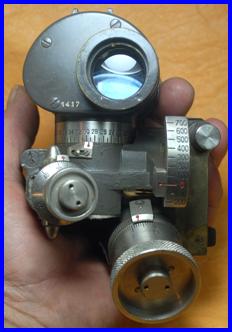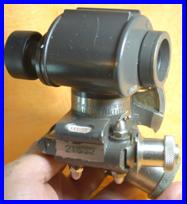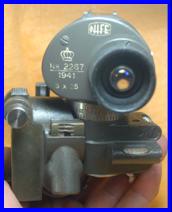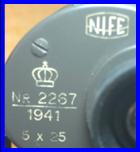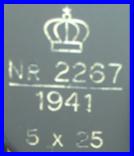
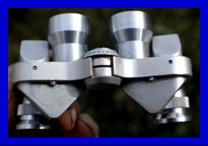
|
OTHER BINOCULARS #4 & OPTICAL SIGHTS |
|
Japanese External Reverse Porro Prism Binoculars. WEBSITE MUSEUM |
|
- SWAP SHOP & MISC - MISC #1 - BINOCULARS CATALOGS #8 - BINOCULARS CATALOGS #9 - INDEX #1 - INDEX #2 |
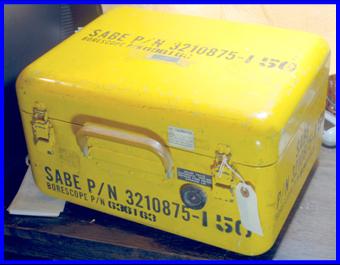
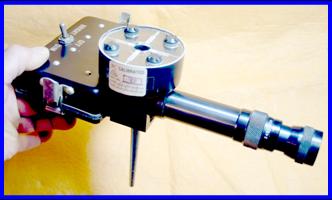


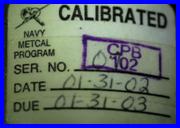
|
Sometimes I view fun with optics being in the research. I have fairly developed skills, and view it more as entertaining challenge than drudgery. I picked this up at my local flea market for $25 and figured that was the price of the military case with the odd optics inside being basically free. Since the case and optics were covered in part numbers and contract numbers and such, and being marked as a borescope, and with the 2003 date not so old, I figured tracking everything down would be a cake walk. In fact the only easy thing was the sticker “ METCAL ” Met r ology and CAL ibration activity of the Naval Surface Warfare Program, and perhaps the Hughes Aircraft Co sticker. The FSCM ( F ederal S upply C ode for M anufacturer) contractor number was a dead end because FSCM had been replaced by CAGE codes. The SABE part number turned up nothing; the “borescope P/N on the case turned up nothing; the contract number turned up nothing; and even the part number on the device with or without “borescope” turned up nothing. Eventually I tried punching in that part number 3493367 as being a NSN / national stock number though I knew it wasn’t and that brought up national stock number 4920-01-420-2527 that had 3493367 as being a listed part number buried within that NSN, listing this as basically being an opto electric target test kit to check the harmonization or boresighting of an aircraft armament system when testing it in a simulated way on the ground, and specifically related to the H1 program to upgrade AH-12 Viper and UH1Y venom helicopters. I live within a half hour of Sikorsky aircraft that makes helicopters, see military helicopters fly by all the time, and frequently find stuff related to them at the flea market, so that all makes perfect sense. |

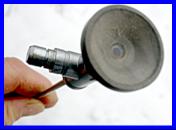
|
Speaking of fun flea market optics I also live near a medical manufacturer, and for a short time somebody showed up at the flea market with some endoscopes (optical surgery tool to insert into an organ to view it’s insides) and lots of endoscopy tools scrapped after salt spray tests. (I think testing of competitors stuff, because all different brands from around the world). So now I have a sizable collection of endoscopy tools and some optical endoscopes ! |
|
Pre 1940 Hensoldt Wetzlar Dienstglas 6x30 German Military Binoculars Captured in Stalangrad |
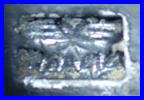
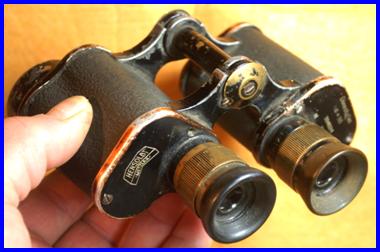
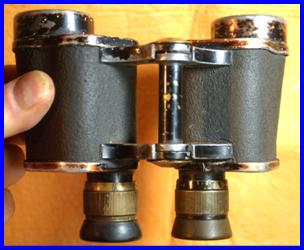
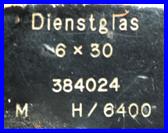
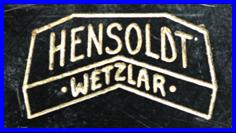
|
Waffenampt? Stamping on hinge |
|
My Hensoldt Wetzlar Dienstglas 6x30 binoculars predate 1940, when manufacturer’s letter codes were instituted replacing placing maker names on binoculars, in order to obscure factory output levels. These were purchased in Russia as a Stalingrad capture. Certainly few Russian soldiers in WWII failed to scoop up any functional binoculars they had the opportunity to grab (nor did any American soldier in either of the World Wars). These binoculars have two deep stampings on the pivot arms which I assumed to be Waffenampt acceptance marks, though they do look a bit different than what I am used to seeing as Waffenampts? And I can’t discern a number, when enlarged a lot. The Waffenampt for Hensolt & Sohne Optische Werke A.G. 1939-1942 was “WaA414”. In other respects these are the standard WWII German infantry binoculars. |
|
1925 Barr & Stroud No2 MkI British Military Binoculars |
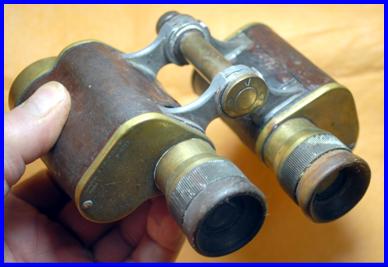
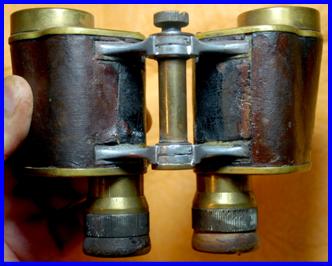
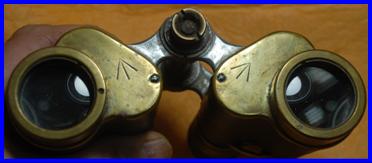

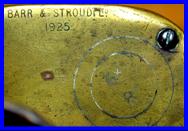

|
My 1925 dated Barr & Stroud British Military Binocular Prismatic No.2Mk I binoculars were made by the Scottish fim in the inter war years, which is a bit unusual, and are brad arrow British military property marked, and were probably originally painted black. |
|
Mystery British Military Property Marked Binoculars |
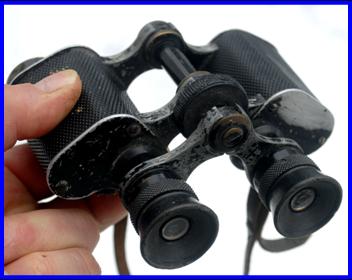
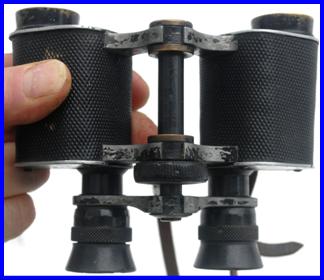






|
My mystery binoculars have no indication of manufacturer, or of brand,or model, or country of origin, or sign it ever had such. But does have multiple British military property marks. It has a stamped number K805 and what looks like a stamped serial number, plus rotary engraved markings CLY 893 in two places. My guess is they were civilian binoculars taken into British military possession and being a usable non standard type that might be issued to the Home Guard volunteers of WWI and WWII (which in WWII had 1.5 million members). , |
|
Pre 1940 WWII E. Leitz Dienstglas D.F. 6x30 German Military Binoculars |
|
WWII German D.F. 12x60 Binocular Director for Antiaircraft Rangefinder (Fertigungskennzeichen) |
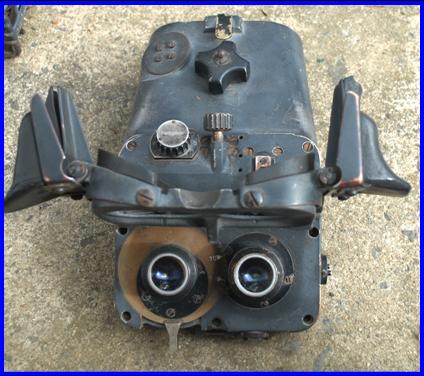
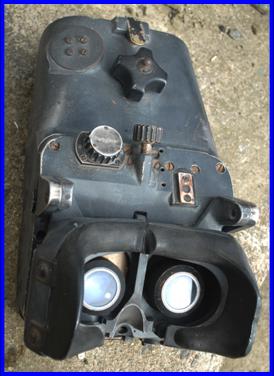
|
My WWII 12x60 German Binocular Director would have been mounted with 2 others to an anti aircraft 4 m antiaircraft rangefinder. Height of aircraft is critical to a flak type antiaircraft unit, which depends on setting the shell fuse to explode at the height of the aircraft , as proximate explosion rather than direct fire is the function of the 88 antiaircraft guns (versus direct fire in their anti tank role). Unfortunately my unit is missing it’s data plate and objective sun shields. |
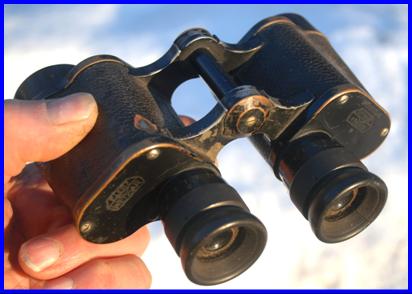
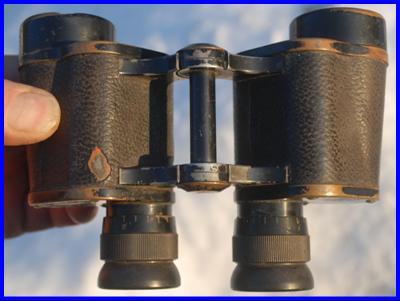
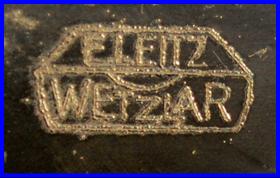
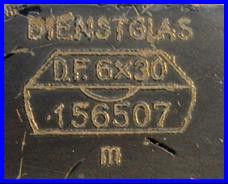
|
My E. Leitz Wetzlar D. F. 6x30 Dienstglas Military Binoculars are of the standard WWII Infantry pattern, but predate 1940 because the manufacturer’s logo is present (rather than a manufacturer’s numerical code). E. Leitz (Leica) together with Zeiss are most respected German optics manufacturers. |
|
WWII ddx Voightlander Dienstglas D.F. 6x30 German Military Binoculars with bakelite case |
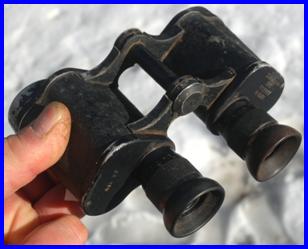
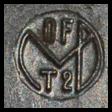
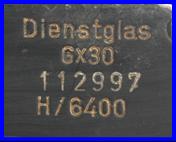

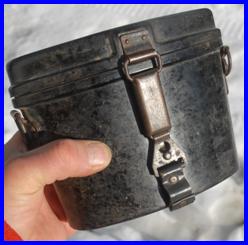
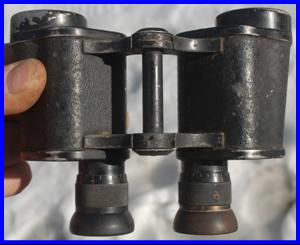
|
My ddx (Voightlander & Sohnne AG Braunschweig) Dienstglas military binoculars are post 1940 standard WWII 6x30 German infantry binoculars, and came in a bakelite (early powdered cast plastic) case with “ MD ” manufacturers mark. The “ KF ” (K ätelfest) marking indicates the use of cold weather Invarol lubricant. The German Russian campaign of 1941 particularly brought intense focus onto lubricants for guns, vehicles, aircraft, binoculars, and everything else to enable extreme cold weather operation. |
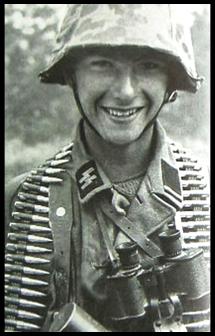
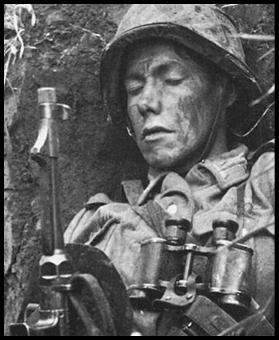
|
US Army Telescope Elbow M17 |
|
My two US Army elbow telescopes M17 have a couple interesting aspects and are slightly different. M17 elbow telescopes are fairly common on the US surplus market, usually dated 1942, and by various manufacturers, because military and optics surplus places like Edmund Scientific sold loads for as little as $12 many years ago. Today people usually claim these to be tank and artillery telescopic sights. The military had 3 or 4 optical devices called M-17, adding to the confusion. I believe the 1942 M17 elbow telescope to have been attached to the M7,M9,and M10 antiaircraft directors for 90 and 120 mm antiaircraft guns for tracking elevation and azimuth, and were not a direct fire sight. The filters fit in with role a fire director telescope. On mine, I pulled them out of the original sealed military crates, at my flea market, where one elbow telescope was packed into around 1 of 4 or 5 crates that had the cone and dome object at left, which I think may be the center section of an anti aircraft parabolic dome? My M17’s had 1992 Tobyhanna Military Depot tags that gave the national sock number and other reference numbers for the telescope. Which come up as elbow telescope without other useful insight. |
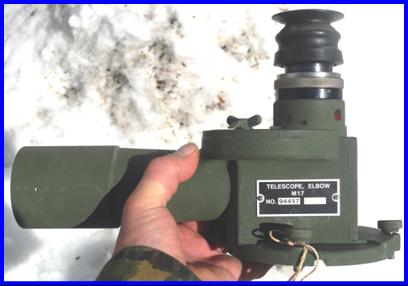
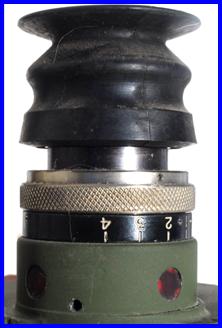
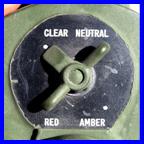
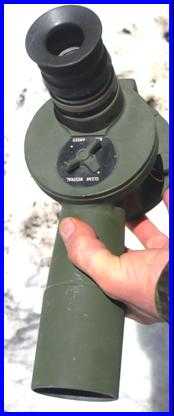
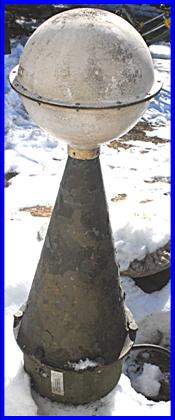
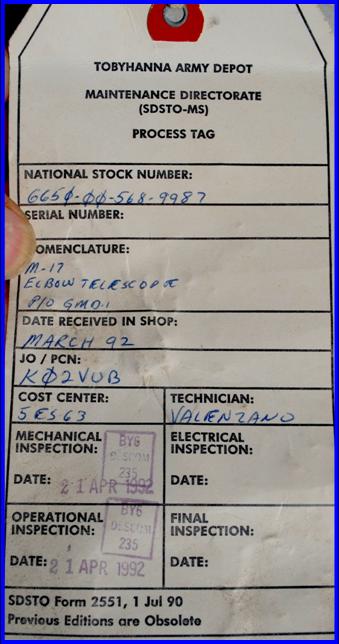
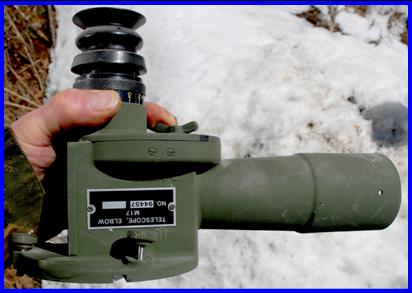
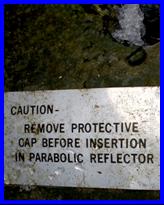

|
1914 WWI Rodenstock Fernglas 08 German Military Binoculars (Galilian/ non Prismatic) |
|
My WWI German military binoculars are of the ubiquitous pattern issued to all non commissioned officers and are marked “ F.G. 08 ” (Fernglas 08 or binoculars [model] 08), and are marked “ K.B Dienst ” ( K.B. Govt Service property?) and also “ J ” (Bavarian acceptance mark of Geschofabric Ingolstadt) and also “ IX14 ” (production date of September 1914) on the pivot arms. These binoculars are also maker marked “ G. Rodenstock Fernglas 08 No. 7676 Munchen ” on the pivot disk. The case is marked as having been made by “ Emil Busch A.G. Rathenow” (camera maker) and has the lid instructions which are faded . |



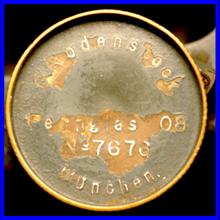
|
I would like to recommend & credit as a reference the multilingual book Milit ä rische Fernglasser un Fernrohre in Heer, Luftwaffe und Marine (Military Binoculars and telescopes for Land, Air and Sea Service) by Hans Seeger as being an invaluable information resource. |
|
As our holdings of miniature binoculars and catalogs have gotten massive, and as Covid has made international acquisition/shipment much more difficult or impossible, I decided to add some space to be able to indulge myself in exploring some other types of binoculars and optics. |
|
Tag on back |
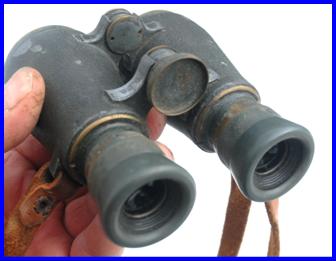
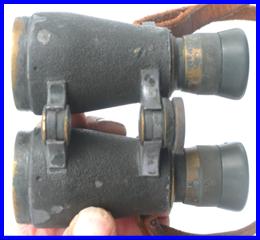
|
1941 WWII Nife 5x25 Swedish Optical Gunsight for Kulsprutam M/36 8x63 mm Machine Gun |
|
My 1941 Nife Swedish medium machine gun optical sight is unusual in several aspects. First of all “Nife” was a trade marked brand name of SAFT Aktiebolag since 1916, and both this Swedish subsidiary and it’s French parent firm were battery makers (and still are), so all the various optical products produced in Sweden were a sideline. Optical sights on medium machine guns have never been commonly used elsewhere. The reason that Sweden put an optical sight with very complex compensating adjustments on their model 1936 Kulsprutam 8x63 mm Browning design based water cooled machine gun is because at the time the Swedish military at the time was quite interested in indirect or plunging long range fire (medium and heavy machine guns are normally considered direct fire weapons). |
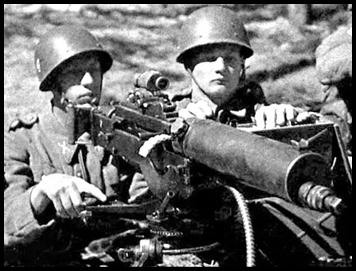
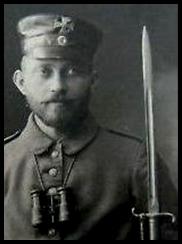

|
Bakelite case maker mark |
|
WWII blc Carl Zeiss 7x50 German Military Binoculars |
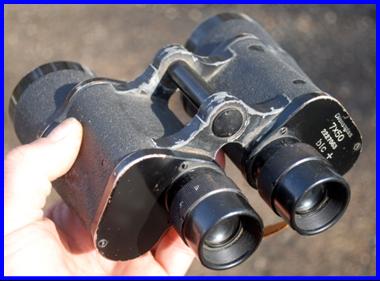
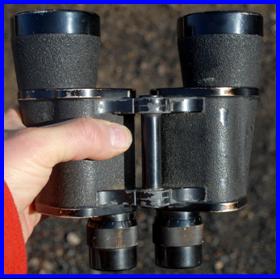
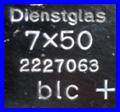
|
WWII blc Carl Zeiss 7x50 German Military Binoculars |
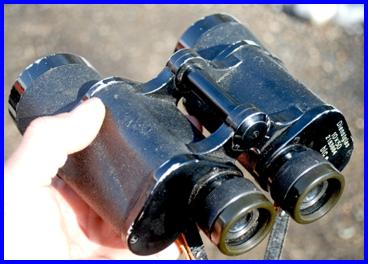
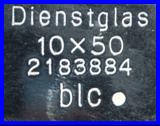
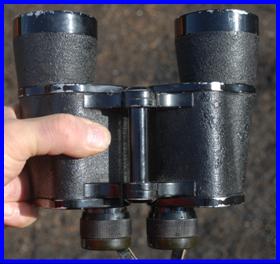
|
My blc 10x50 Dienstglas WWII German military binoculars were made by Carl Zeiss. They are actually the same size as the 7x50 model above. Isuspect the “ • ” to indicates use of a cold weather grease. |
|
My blc 7x50 Dienstglas WWII German military binoculars were made by Carl Zeiss. The “ + ” cold mark indicates use of cold weather grease #1442 (E lubricant) . |
|
WWII rnl Carl Zeiss 6x30 German Military Binoculars (post November1944) |
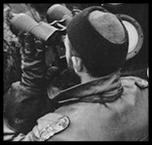
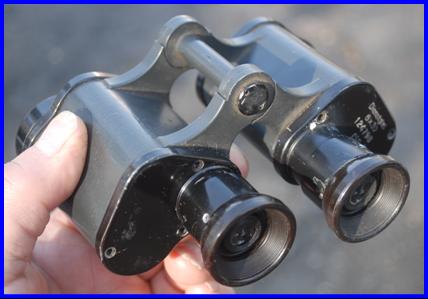
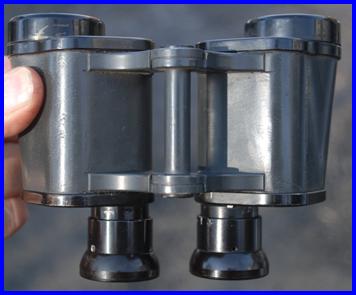
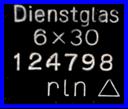
|
My rnl 6x30 Dienstglas WWII German military binoculars were made by Carl Zeiss after November 1944, when Zeiss changed from their previous blc manufacturer code to the rnl code. The triangle mark indicates use of a cold weather grease. |
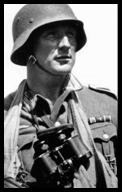
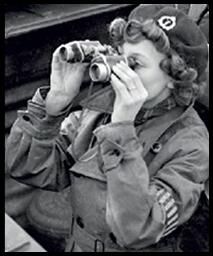

|
WWI E.Leitz Fernglas 08 German Military Binoculars (Galilian/ non Prismatic) |
|
British Barr & Stroud CF41 Admiralty (Navy) Binoculars with Expanding Objective Shields |
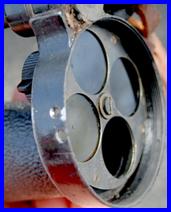
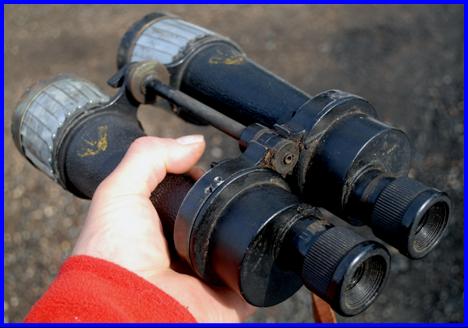
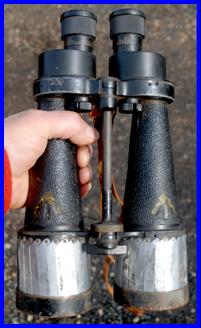
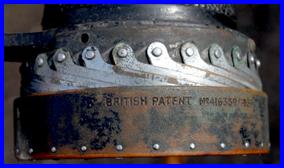
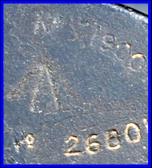
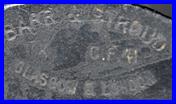
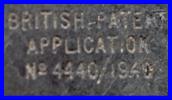

|
My WWII era Scottish manufactured Barr & Stroud CF 41 British Admiralty Naval binoculars are interesting because this example has the very clever 1933 marked patent #416359 metal twist expanding sun shields for the objective lenses. The binoculars themselves are marked for a 1934 patent #436220 and also marked 1940 patent application 4440, which dates these as post dating1940. Like many naval binoculars, these contain internal lever controlled filter disks for various weather conditions. |
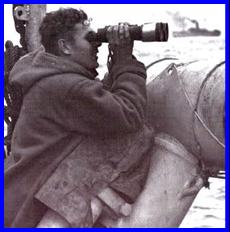
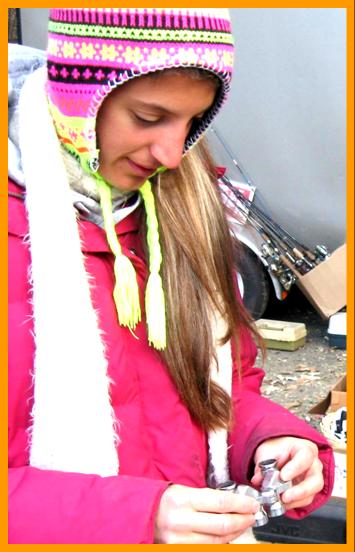
|
German and French Pocket Binoculars Accumulation from Local Flea Market |
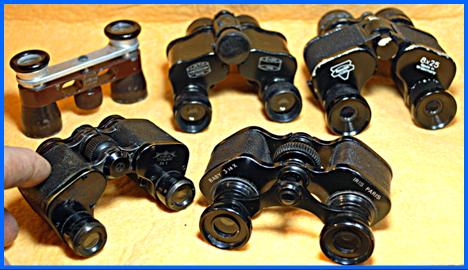
|
Internal filter disk |

|
Some mixed small binoculars that were casual cheap impulse purchases from my local flea market. CCW from lower left German Busch Thalier 3 1/2x; French Iris Paris Baby 3 1/2x; German Leeader 8x25; French L. Petit 6x20; Bush Multinett |
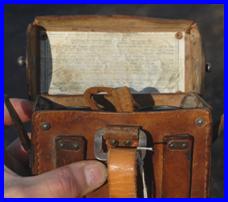
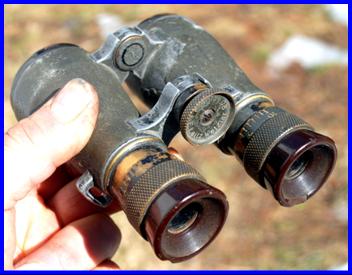
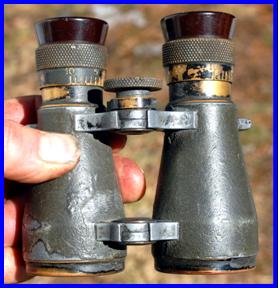
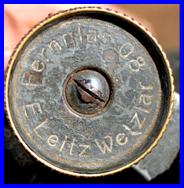
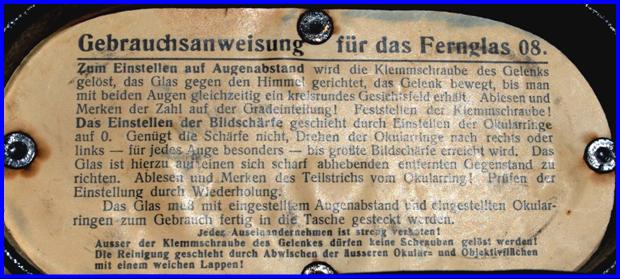
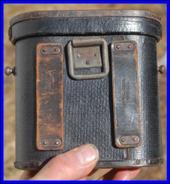
|
My WWI German Fernglas 08 military binoculars were made by famous optics maker E. Leitz in Wetzlar in November 1918, near the end of the war (the Versailles Treaty ending the war was June 28, 1919). It was “captured” and brought back to the United States by Corporal Elton O. Bartlow, of the U.S. 83rd Infantry Division, 329 Infantry Regiment, Machine Gun Co., usually associated with Ohio USA. The case is marked as made by Spindler & Hoyer Gottingen. |
|
Case Lid Inside Label |


